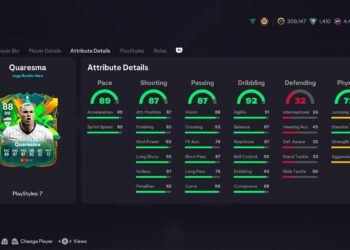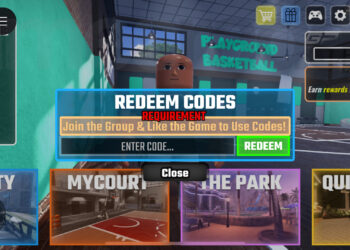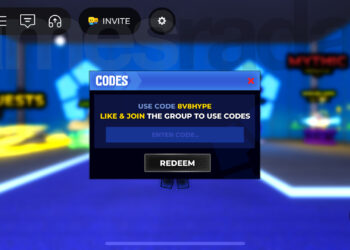Select Language:
Get ready, because recruiting for College Football 26 is about to take over your life. The game’s dynasty mode is among the most engaging experiences in sports gaming today. With most players on your roster graduating in just four years, you’ll need to be proactive in recruiting high school talent. That’s where this scouting report comes into play. Here’s how to discover the top young players in your College Football 26 recruiting strategy.
According to our College Football 25 recruiting guide, three key factors shape the recruiting process in College Football 26’s dynasty mode. Understanding these elements is crucial for attracting talent.
- Each recruit has specific needs and motivations that you must explore through individual interactions.
- Different areas of the country produce varied player quality and types, reflecting real-world data.
- Top programs can recruit nationwide, while smaller schools must focus their efforts more strategically.
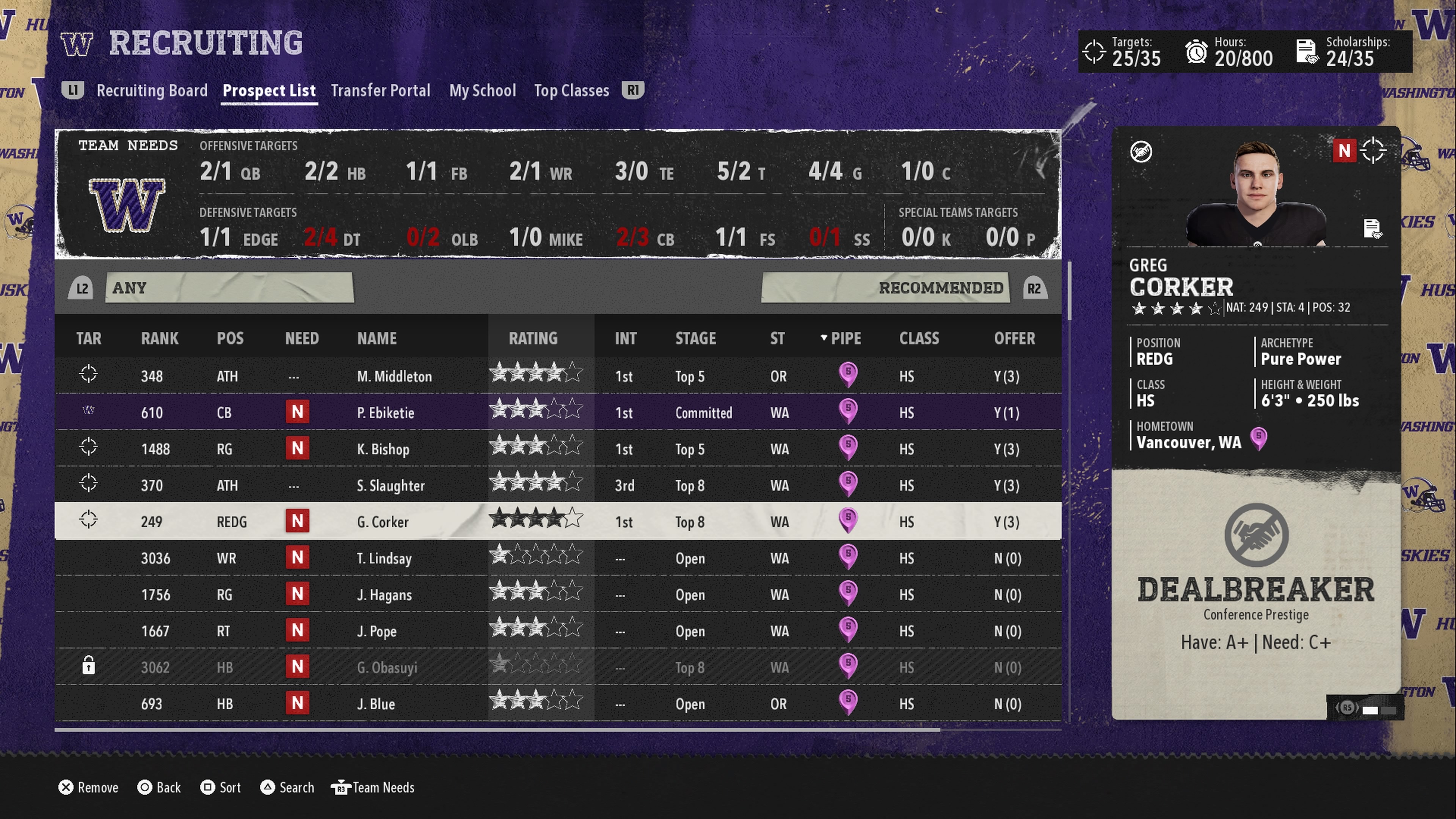
Before starting your first game, you’ll need to set up your recruiting board, which can include up to 35 targets. You can also offer up to 35 scholarships throughout the season, so it’s wise to spend time laying this groundwork.
Your primary focus should be on five-star prospects with a pipeline rating of 5. These should top your recruitment list, especially at positions that need bolstering. Some may even commit right after you offer a scholarship. Next, target four-star prospects with a 5 pipeline rating and five-star prospects with a 4 rating. Then focus on three-star prospects with a 5 pipeline rating, and so on.
As you gain experience, you’ll refine your search criteria, such as height and weight, but this advice provides a solid foundation.
Throughout the season, take note of each prospect’s three main motivations, some of which may be deal-breakers. Ensure that your strengths match their key interests, as those recruits with only B or C ratings in their desired traits need to be removed from your list promptly; otherwise, they might sign elsewhere before you even get a shot at recruiting them.
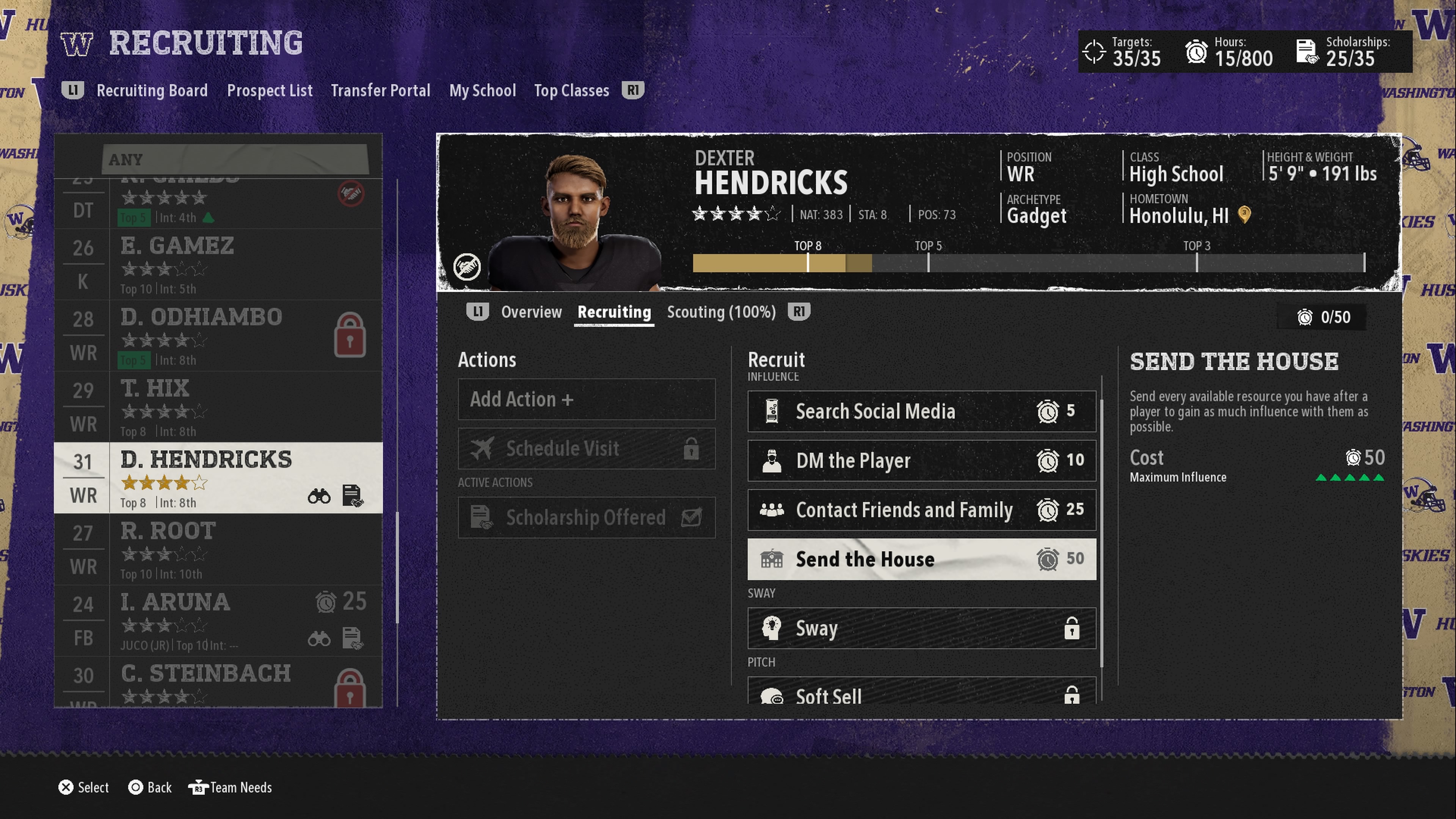
As your season rolls on, dedicate time to impressing your recruits. Prospects will gradually focus their choices from Open to Top 8, Top 5, Top 3, and ultimately Commitment. Your goal is to remain above their cut-off each week.
The number of recruiting hours you can use depends on your team’s prestige rating. A five-star school starts with 1,000 hours, while a one-star institution has just 350. You can spend a maximum of 50 hours on one prospect unless you have the Always Be Crootin’ ability, which gives you 70 hours for certain positions.
Here’s how you can break down those 50 hours for each prospect:
- Scout: 10 hours (scouting one player generally takes three to five sessions)
- Offer Scholarship: 5 hours
- Social Media Check: 5 hours
- Direct Message the Player: 10 hours
- Contact Friends and Family: 25 hours
- Send The House: 50 hours
- Soft Sell: 20 hours (available only if the recruit is in their top five choices)
- Hard Sell: 40 hours (available only if the recruit is in their top five choices)
- Sway: 30 hours (available only if the recruit is in their top five choices)
- Schedule Visit: 40 hours (refer to the final note of this guide)
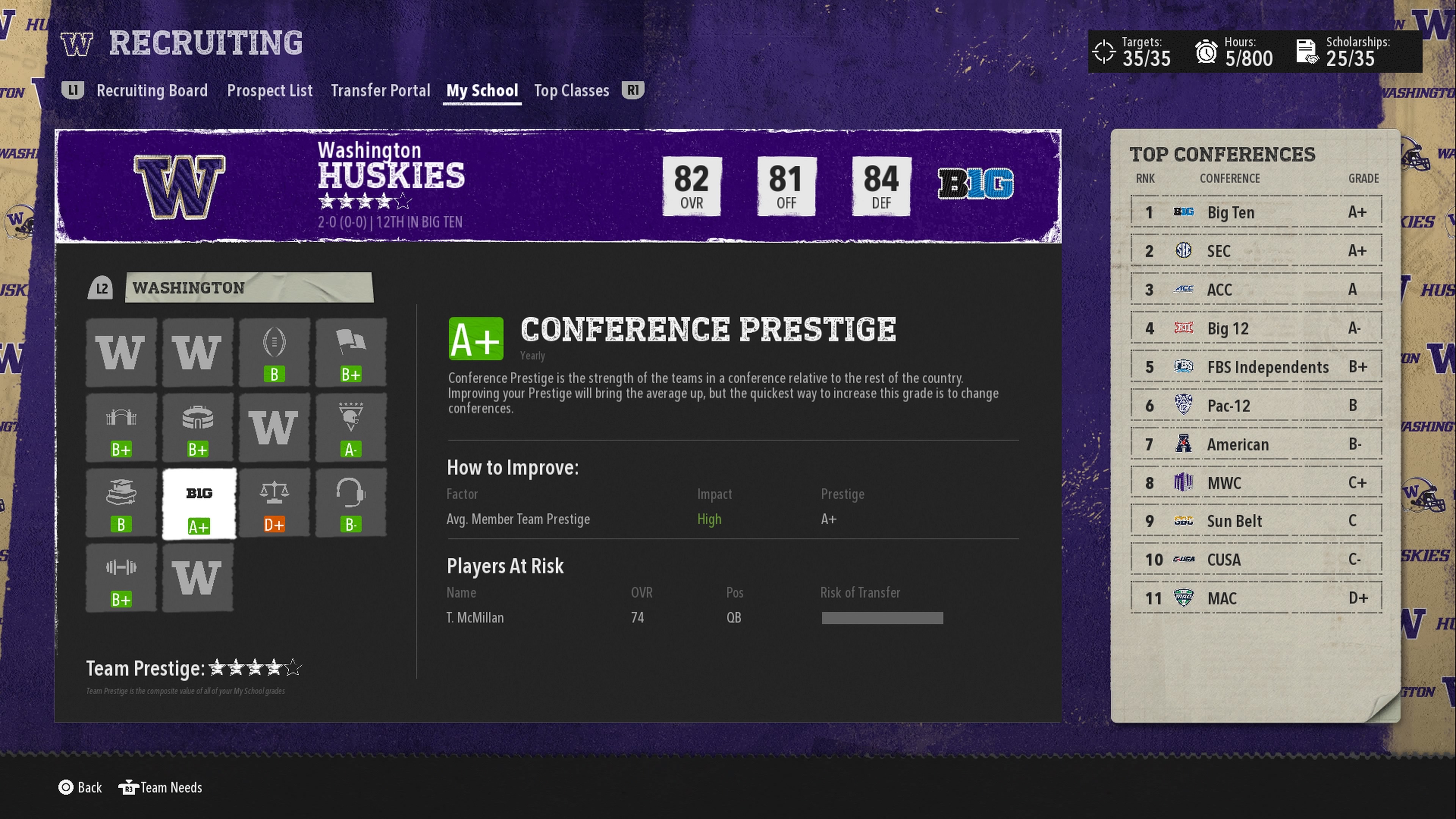
Your school’s grades play a crucial role in recruiting. There are 14 grades total, and most can improve or decline throughout the season—meaning performance counts. When interacting with players or hosting them for visits, align your strengths with theirs using a color-coded system. Green signifies a positive match, while red indicates a mismatch. Don’t forget that tweaking certain elements in College Football 26 can enhance your chances.
- Academic Prestige: This reflects your school’s academic standing. This rating cannot be altered.
- Athletic Facilities: The state of your program’s facilities.
- Brand Exposure: Your team’s overall visibility.
- Campus Lifestyle: A rating of the campus environment. This rating cannot be altered.
- Championship Contender: Your team’s current standing in terms of championship success.
- Coach Prestige: The reputation of your coaching staff, particularly the head coach.
- Coach Stability: The tenure of the coaching staff and their job security over the next four years.
- Conference Prestige: The overall strength of your college’s athletic conference.
- Playing Style: Your team’s playing strategy, which impacts player interest. For example, Field General quarterbacks are evaluated by their passing yards per game.
- Playing Time: How quickly a player could start in your program.
- Pro Potential: The likelihood of current players making it to the NFL.
- Program Tradition: Historical achievements in championships and titles.
- Proximity to Home: Where your college sits relative to a recruit’s home.
- Stadium Atmosphere: Evaluated based on how tough it is to play in your home stadium, indicated by home wins.
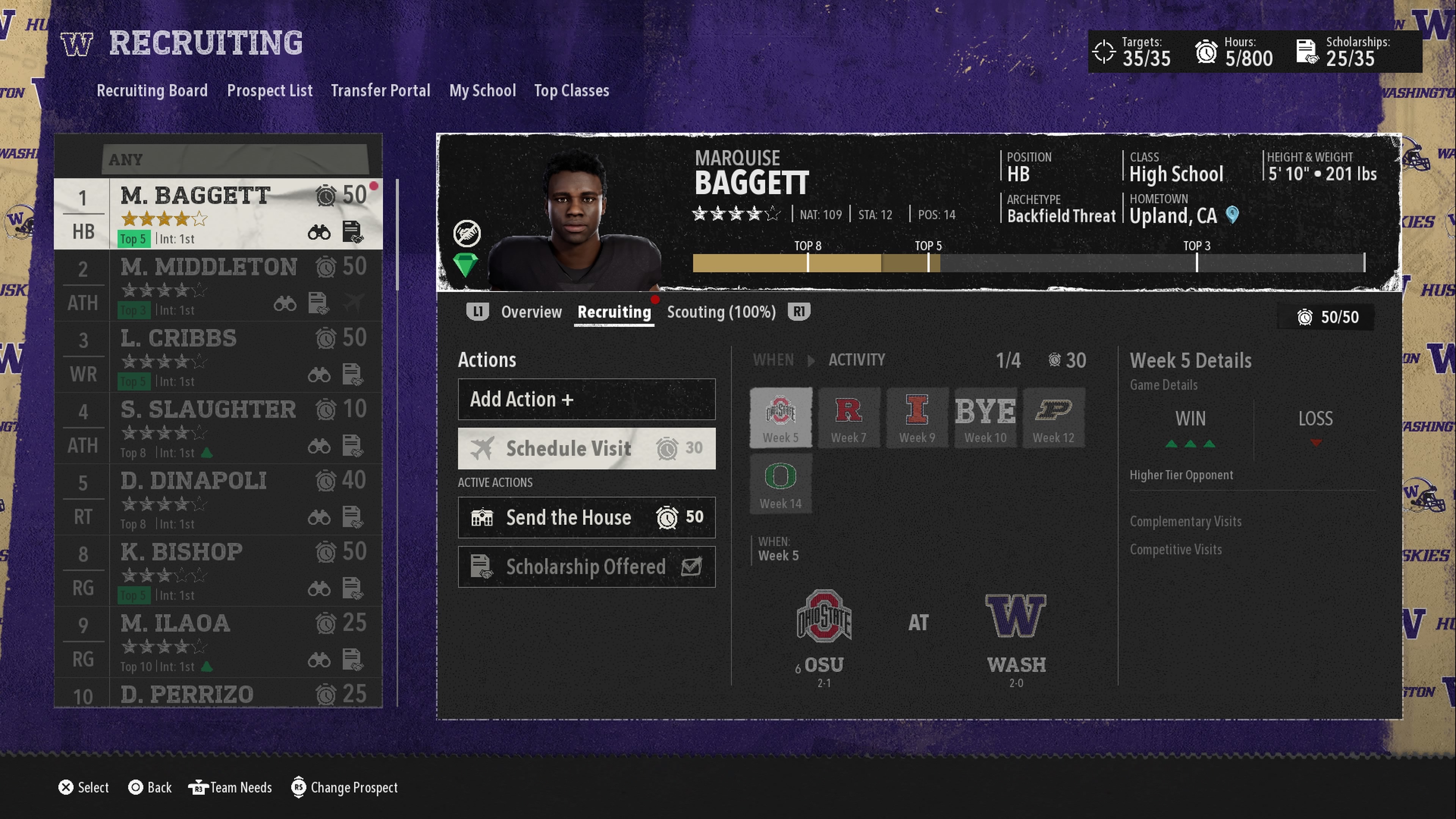
As the season progresses, you can maximize your chances of landing key recruits through the Schedule Visit option. This takes 40 hours from your team’s total allocation, but it doesn’t count against the 50 hours allocated per individual prospect. This option becomes available only once a recruit has narrowed down their choices to the top five and has received a scholarship offer from your school.
You can host four prospects per visit, with activities only taking place during home games or bye weeks. Focus on aligning the recruits’ interests with your strengths during these visits! Furthermore, consider their playing positions; bringing in two quarterbacks at once may compete against each other negatively, while a quarterback and a left tackle could build a good rapport. Winning the game during their visit is also crucial—no recruit wants to join a losing program!
After a recruit verbally commits, it’s essential to fulfill your promises until signing day. For instance, if a prospect lists Championship Contender as a deal-breaker and your team loses several consecutive games, you run the risk of them changing their mind. But if all goes to plan, once signing day arrives, you can breathe a sigh of relief and start recruiting big names from the College Football 26 elite. Good luck, coach! Want more tips for NCAA 26? Check out our guide on the best playbooks in College Football 26.



